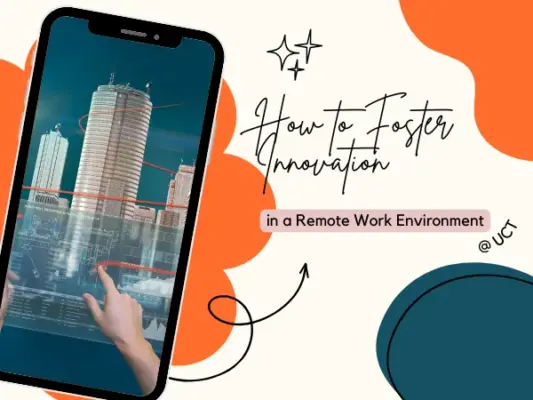
Introduction
Innovation is the lifeblood of any thriving organization, driving growth and ensuring relevance in an ever-evolving market. With the rise of remote work, fostering innovation presents unique challenges and opportunities. While remote work offers flexibility and diverse perspectives, it also requires intentional strategies to ensure that creativity and collaboration flourish outside a traditional office setting. In this blog, we will explore effective strategies to nurture and sustain innovation in a remote work environment.
1. Build a Culture of Open Communication
Why It Matters:
Open communication is crucial for idea sharing and collaboration. In a remote setting, where face-to-face interactions are limited, maintaining clear and effective communication channels becomes even more important.
How to Implement:
– Use Collaboration Tools: Leverage platforms like Slack, Microsoft Teams, or Zoom to facilitate regular and transparent communication.
– Encourage Regular Updates: Set up frequent check-ins and updates to keep everyone informed and engaged.
– Foster Inclusivity: Ensure that all team members feel comfortable sharing their ideas and feedback, regardless of their location.
Impact:
Building a culture of open communication ensures that ideas flow freely and that all team members feel connected and valued, enhancing collaborative efforts and innovation.
2. Implement Flexible Work Practices
Why It Matters:
Flexibility in work practices can lead to increased creativity and productivity. Remote work allows individuals to tailor their work environments to their needs, which can spark innovative thinking.
How to Implement:
– Flexible Hours: Allow team members to work at times when they are most productive.
– Personalized Workspaces: Encourage employees to create work environments that inspire and motivate them.
– Results-Oriented Approach: Focus on the outcomes rather than the processes, giving employees the freedom to work in their own way.
Impact:
Flexible work practices can boost motivation and creativity, leading to more innovative solutions and a more engaged workforce.
3. Encourage Continuous Learning and Development
Why It Matters:
Ongoing learning is essential for fostering innovation. Remote work provides a unique opportunity to invest in the professional growth of employees through various online resources and training programs.
How to Implement:
– Offer Online Courses: Provide access to online courses and webinars that enhance skills and knowledge.
– Promote Knowledge Sharing: Create opportunities for employees to share their learnings with the team through virtual workshops or discussion forums.
– Support Professional Development: Encourage and support employees in pursuing certifications, advanced degrees, or other forms of professional development.
Impact:
Investing in continuous learning helps employees stay updated with the latest trends and technologies, which can drive innovative thinking and solutions.
4. Foster Collaboration Through Virtual Brainstorming
Why It Matters:
Brainstorming sessions are a powerful tool for generating new ideas and solutions. In a remote setting, these sessions must be adapted to ensure they remain effective and inclusive.
How to Implement:
– Use Digital Whiteboards: Tools like Miro or MURAL can facilitate collaborative brainstorming sessions.
– Set Clear Objectives: Define the goals and focus of brainstorming sessions to ensure productive outcomes.
– Encourage Diverse Input: Invite team members from various backgrounds and departments to contribute different perspectives.
Impact:
Virtual brainstorming sessions can lead to diverse and innovative ideas by leveraging the collective creativity of remote team members.
5. Recognize and Reward Innovation
Why It Matters:
Recognition and rewards motivate employees to think creatively and contribute innovative ideas. Acknowledging and celebrating achievements helps reinforce a culture of innovation.
How to Implement:
– Create Innovation Awards: Establish awards or recognition programs to celebrate exceptional ideas and contributions.
– Provide Incentives: Offer tangible rewards such as bonuses, gift cards, or additional time off for innovative solutions.
– Share Success Stories: Highlight successful projects and ideas in company communications to inspire others.
Impact:
Recognizing and rewarding innovation encourages employees to continue thinking creatively and contributes to a positive and innovative work culture.
6. Leverage Technology for Enhanced Collaboration
Why It Matters:
Technology can bridge the gap between remote team members and facilitate smoother collaboration. Using the right tools can enhance creativity and streamline the innovation process.
How to Implement:
– Adopt Project Management Tools: Platforms like Asana or Trello can help manage tasks and track progress.
– Utilize Video Conferencing: Regular video meetings can maintain face-to-face interaction and build stronger connections.
– Explore New Technologies: Stay updated with emerging technologies that can enhance collaboration and innovation.
Impact:
Leveraging technology effectively can improve collaboration, streamline workflows, and enhance the overall efficiency of remote teams.
Conclusion:
Fostering innovation in a remote work environment requires a thoughtful approach to communication, flexibility, learning, collaboration, recognition, and technology. By implementing these strategies, organizations can create an environment where creativity thrives, leading to continuous growth and success. Embracing the unique opportunities of remote work while addressing its challenges can drive innovation and keep your business at the forefront of your industry.